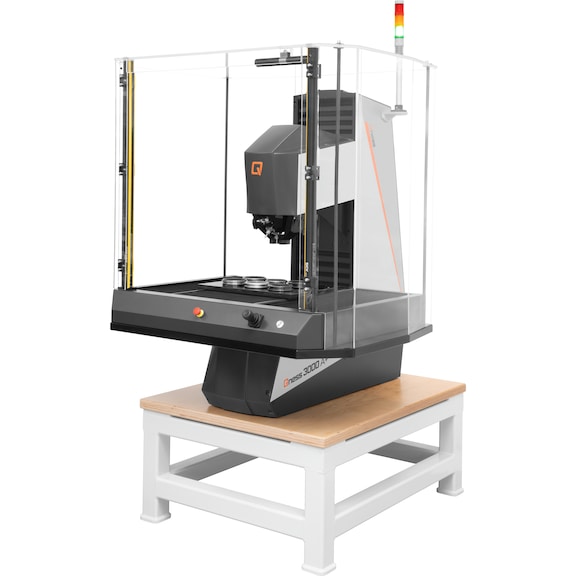
For detailed information, other images and documents, please select individual articles from the following table.
Products
Application
For standardised hardness testing in accordance with Brinell DIN EN ISO 6506 (ASTM E-10), Vickers DIN EN ISO 6507 (ASTM E-384, ASTM E-92), Rockwell DIN EN ISO 6508 (ASTM E-18), Knoop DIN EN ISO 4545 (ASTM E-384, ASTM E-92) as well as for testing plastic in accordance with DIN EN ISO 2039 and optionally for testing carbonaceous materials in accordance with DIN 51917. Ideal for fully automated hardness testing of multiple processes or test samples, with a load application of up to 29,430 N.
Execution
- High-end PC system with 24" TFT monitor, in computer cabinet upon request
- Software Qpix Control2, perfectly adapted to automated processes
- 2-way swivel head or optional 8-way tool changer for mounting indenter and lenses
- Mechanically pivoting hold-down clamp
- Fully automatic XY slide with high-precision positioning drive
- Dynamic joystick for controlling all three axes (XYZ)
- Electronically controlled test loads guarantee fast and precise hardness tests
- Options: CE enclosure with light curtain that is fully integrated into the machine design.
- Model series A+ incl. sample image camera 5 megapixels
Advantage
- Ideal for fully automated test procedures with high process reliability
- Collision protection using innovative CAS technology
- Full integration of the Qness sample holder, CAD compatibility with 3D component imaging; range of other 3D control elements and views
- Ergonomic PC cabinet with surface for keyboard and mouse
- A result in just three steps: 1. Load the sample, 2. Load the row and 3. Start the test sequence
Select RAL-colour code
!! NOTE: On-screen visualisation of the colour differs from real colour shade!!



